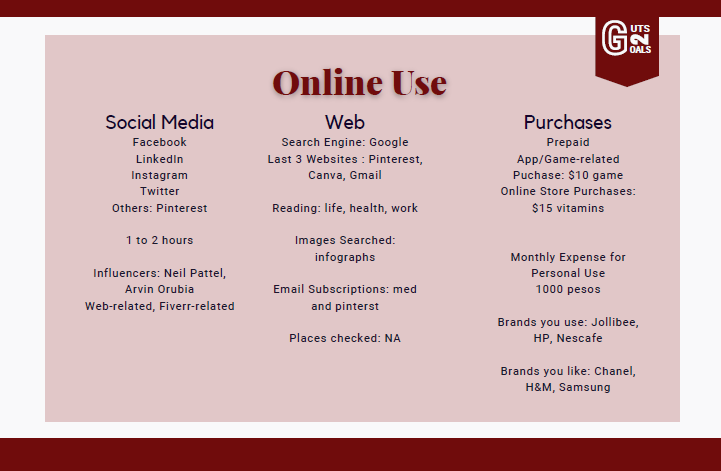Branding is a strategy. It means curating every step and taking calculated risks. Yes. Branding has risks. Missteps can ruin the brand’s reputation, recognition, and market position. One of the first things you need to do to prevent branding mistakes is to create a buyer persona.
What is a Buyer Persona?
It is a semi-fictional character or avatar that represents your ideal customer. Researching your niche market reveals the many faces of your potential customer. A buyer persona is not simply a summary of customers’ profiles but includes deeper details about their behavior and psychographics. Hence, creating a buyer persona takes extensive research. It relies on information from real customers.
A buyer persona is not about designing your ideal customer’s avatar. In fact, it includes an ideal customer’s profile, day-to-day activities, challenges, and decision criteria. By knowing exactly who you are talking to, you can create a better marketing strategy. Thus, you can provide more appropriate products and services.
You can also have many buyer personas. For example, blog readers may come from different countries. Content writing clients often come from different professions. In fact, no two customers are exactly alike. The goal is to create one customer persona who is most alike to the rest of your target market.

Who is your Ideal Customer?
Before you begin creating your buyer persona, review your target audience. A target audience includes the customers in your niche market. Initially, you can research your competitors’ customers. Then list their general demographic traits. Finally, identify their common demographic traits.
Secondly, try to reach out to people with the ideal demographic traits. Then research their psychographics and behavioral background. You can collect data through a survey or even conduct an interview. Once again, look for similarities in your research data.
Thirdly, narrow down your data into sub-niches. Each sub-niche can have a specific customer avatar. However, it is best to start with a buyer persona of the dominant sub-niche.
Fourthly, research the dominant sub-niche’s online presence. Try to find out about their social media usage. Do not worry. Certainly, you are not invading privacy if it is a public profile. But please do not go anywhere beyond that. You only need enough information to create a snippet of your buyer persona’s life.

Lastly, put everything together in a one-page document. Create a “day-in-life” scenario. Add some quotes that reflect your buyer persona’s belief or attitude. Then, explain how your brand or business can help her.
The Negative Buyer Persona
Now that you have completed your customer persona. You may also want to create a Negative Buyer Persona. Simply, it represents the customers that you want to avoid. For bloggers, it can be a ‘grammar police’. For retailers, it can be a ‘serial bargain hunter’. Even if it is “negative”, it can help you focus on your ideal customers.
Moreover, try not to fixate too long with the initial persona. It is a must to analyze, refine, and redevelop your buyer persona. You need to maintain consistent data collection as well as communication with your target market. Ideally, it is enough to review your personas once every quarter.
Profile Information Examples
Demographics include:
- Age, Gender, Generation
- Education
- Employment, Occupation
- Status
- Income
- Skill/Talent
Psychographics include:
- Personality
- Spending Habit
- Hobbies
- Lifestyle
- Values
- Aspirations
- Goals
Behavioral background includes:
- Benefits sought from the product/service
- Reason for using the product/service
- Previous experience with the product/service
- Usage frequency
- Brands that you want to have
- Brands that you currently use
Benefits of Buyer Persona
Personalize your offers
Knowing who to connect to makes it easier to tailor your offers and messages. For example, communicating to artists will not be the same as writing for lawyers. Using a persona can help you identify with your audience.
Keeps your brand customer-focus
In branding, there is a danger of becoming “me-focused”. It means forgetting that you have a target market. Instead, the brand focuses too much on itself and expects the customers to buy it.
Increase the return of investment
Creating a customer avatar can direct you to the needs and requirements of your target market. This means you will not be spending resources on unnecessary advertising. For instance, if your buyer persona is a millennial, you can spend more on social media advertising than TV or Radio advertising.
Takeaway
After reading this post, you should be able to create your own buyer persona. As you already know, this can help with your communication style, marketing strategy, and overall branding. Note that you are allowed to change your buyer persona as per your business needs. It is inevitable that your business will grow or that you will encounter roadblocks along your business journey. At times like these, try to review your buyer persona and from there perhaps re-evaluate your branding and business strategy. Comment below your business (link to your business) and the Buyer Persona that you are targeting.
Thanks for reading!
Ciao



Excellent article! The negative buyer persona is often overlooked and a concept is like to work on more.
Great tips! This takes me back to post secondary during my marketing communications class haha I’ve done multiple buyer personas but the negative one is something I haven’t done before. I’m going to do this with my brand and future business. Thanks for sharing x
http://www.lynnmumbingmejia.com